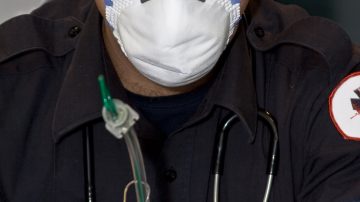In the emergency department (ED), colorimetric or quantitative capnography is the gold standard for confirmation of endotracheal tube placement. Capnography may be unreliable in patients with severe pulmonary obstruction, greatly reduced pulmonary circulation, or cardiac arrest. Transtracheal ultrasound imaging with…
Read MoreUse of video laryngoscopy (VL) results in improved glottic views, fewer intubation attempts, and higher intubation success in both operating room and emergency department (ED) patients. Less is known about performance characteristics of VL during urgent inpatient intubations performed in…
Read MoreCardiac arrest patients who were intubated had similar outcomes to those who had a supraglottic airway device (e.g., King tube) inserted in the pre-hospital setting. A literature review of 5 studies and over 300,000 patients with pre-hospital cardiac arrest demonstrated…
Read MoreThere has always been some controversy about the utility of applying cricoid pressure (aka Sellick Maneuver) during rapid sequence intubation for the purpose of preventing aspiration. Theoretically, applying pressure on the cricoid cartilage posteriorly should occlude the esophagus against the…
Read MoreDirect vs Video Laryngoscopy In 1878 William MacEwan first passed a tube into the trachea of an awake patient using his fingers as a guide. Now health care providers routinely perform endotracheal intubation as a life saving intervention. Despite over…
Read MoreEndotracheal Intubation When You Can’t See the Cords: the Bougie is Your Friend This is a problem that every emergency physician or hospitalist faces on occasion and if you haven’t encountered this problem then you haven’t done enough intubations. There…
Read MoreCategories
- ACLS (1)
- Arterial line (33)
- Cardiovascular diseases (77)
- Central line (55)
- Chest Tube (39)
- Dermatology (4)
- Emergency Procedures (139)
- Endocrinology (6)
- Endotracheal Intubation (36)
- Events (24)
- FAST Exam (12)
- Featured (113)
- Featured Procedure (42)
- Gastrointestinal diseases (32)
- Ginecology (3)
- Glidescope Intubation (21)
- Hematology (33)
- Hospital Procedures (85)
- Infections (32)
- Intraosseous line (8)
- King Tube (27)
- Laryngeal Mask Airway (18)
- Lumbar Puncture (36)
- Mechanical Ventilation (34)
- Medical General (95)
- medical procedures (258)
- Needle Decompression (6)
- Nephrology (11)
- Neurological diseases (12)
- Oncology (4)
- Paracentesis (32)
- Pericardiocentesis (3)
- Procedural Sedation (19)
- Respiratory diseases (85)
- RUSH Exam (8)
- Thoracentesis (37)
- Traumatology (24)
- Travel (27)
- Ultrasound-Guided Peripheral IV (13)





